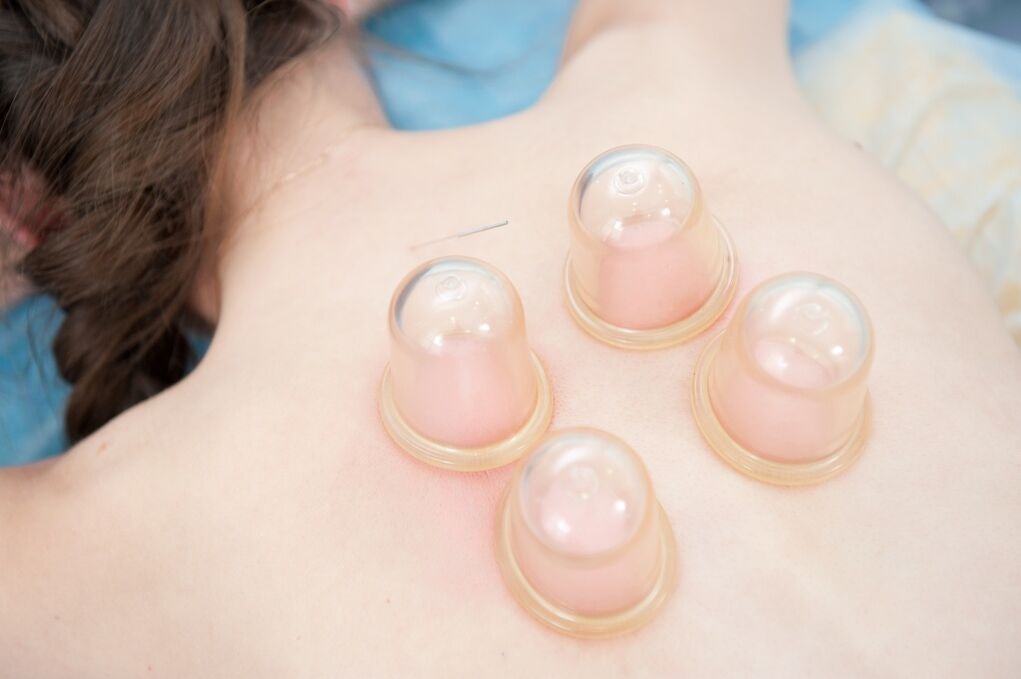
Osteochondrosis is a dysthrophically deep disease, during which there is a violation of the structure and function of intervertebral discs.Neck osteochondrosis is a damage to the cervical spine.
During the pathological process with intervertebral disk pulp neck osteochondrosis (its central and smooth part), losing its depreciation properties.The cervical spine loses flexibility, mobility, blood vessels and nerve endings are violated in the channels between the vertebrae.The peculiarity of this pathology is that its symptoms may look like signs of other diseases, as a result of which the diagnosis of the disease is difficult and proper treatment is prescribed too late when irreversible changes have already begun in cartilage tissue.
Cervical osteochondrosis, whose symptoms and treatment will be described below, as well as cervical osteochondrosis, will develop on average and advanced age, at the beginning of men and a little later in women, and in recent years, a significant "rejuvenation" of neck osteochondrosity has been observed.Of course, over the years, even in a healthy spine, intervertebral disc cartilage fabric is replaced by fibrous fibers over time, it is compacted and hardened.This process is natural, leads to a decrease in the mobility of the spine, but by pain, as a rule, is not accompanied, since fibration processes do not affect nerve endings and do not cause violation.In contrast to natural and pathological physiological changes in intervertebral discs, characteristic of osteochondrosis, spread out of the cartilage, which causes blood vessel compression and nerve endings, pain and vascular syndrome.
The causes of cervical osteochondrosis
Partially in the development of “guilty” neck osteochondrosis, the disturbance of the modern person and the corresponding distribution of loads along the spine spine, as well as the natural processes of body aging aging, and there are several causing the development and progression of this pathology:
- sedentary lifestyle;
- long stay in the same position during work;
- overweight body weight;
- continuous lesions of the spine in the neck;
- chronic stress, constant nerve tension;
- regular hypothermia of the collar zone muscles (for example, when it is near the air conditioning air flow);
- Congenital vertebral anomalies and intervertebral discs.
What is the dangerous osteochondrosis of the neck?
First of all, neck osteochondrosis complicates several movements, makes them painful, placing their contribution to the patient's hypodynamics, which alone is harmful.A vicious circle arises: small physical activity causes osteochondrosis, which makes the patient even less physically active, which in turn contributes to the progression of the disease.
In addition, in the channels along the vertebrae of the cervical region, the most important nerve plexuses and blood vessels are maintained, whose irritation and violation causes reflex headaches, chronic dizziness, blood pressure destabilization, which can make the patient inconsistent, significantly reduce the quality of his life.
The special danger of neck osteochondrosis is in its difficult diagnosis and high probability of inadequate and inadequate treatment.
Cervical osteochondrosis symptoms
The manifestations of cervical osteochondrosis are worn out, which greatly complicates the diagnosis.As a result, the patient, as a rule, addresses the doctor, even when intervertebral joint processes were an irreversible character.The most important symptoms of neck osteochondrosis include:
- dizziness;
- headache;
- Marked changes in blood pressure.
All signs listed are not specific, they can be indicated not only for cervical or cervical osteochondrosis, but also for many other diseases.Therefore, it is very important for any of these symptoms to consult a doctor and undergo a complete medical exam in order to discover the true cause of the condition.
In addition, cervicalgia is characteristic of neck osteochondrosis, or neck pain.It can be located on the back, "in the depths" of the neck and give it to the shoulder, hand.The sudden beginning of a pain attack is characteristic - immediately after awakening, after sneezing or coughing, laughter, clear movements.Pain, as a rule, is moderate, combined with a crisis in cervical vertebrae when trying to turn the head and if the process has not yet accepted an irreversible chain, after a while decreases on its own.
Separately, it should be said about fluctuations in blood pressure in cervical osteochondrosis.This is an nonspecific symptom, but there are some signs that the connection of blood pressure jumps with osteochondrosis can be established.This connection is characterized by fluctuations in blood pressure throughout the day.Long -term hypertension, on the contrary, is atypical for osteochondrosis.The cause of pressure fluctuations lies in the reflex reaction of nerve endings in the walls of blood vessels in response to their irritation and compression.As a rule, blood pressure jumps for osteochondrosis are accompanied by headache, limb pain, impaired muscle and skin sensitivity in the collar zone.
In addition, cervical osteochondrosis is characterized by several syndromes (combinations of various symptoms):
- Vertebral - Various symptoms associated with damage to the bone tissue of the vertebrae (neck pain when trying to turn the head, violation of cervical spine mobility, morphological changes in vertebral bodies and intervertebral discs);
- Vail Artery Syndrome - Various symptoms indicating the connection of the pathological process to the vertebral arteries.With insufficient blood flow in the artery, when compressed, noise in the ears, dizziness, blood pressure skills, nausea until vomiting, a feeling of impressive.The irritation of nerve endings on the artery walls is manifested by migraines, the flash of "eye flies" and a temporary decrease in visual acuity.Oxygen hunger from brain tissue, which feeds vertebral arteries, manifests itself through fainting, chronic drowsiness, a slight constant headache, a feeling of weakness, a decrease in the concentration of attention and performance.The syndrome is characteristic not only for osteochondrosis, but also for atherosclerosis and other pathologies of circulatory disorders in the vertebral arteries;
- KORESHKA - It occurs due to the compression of the roots of the spinal nerves, defeat on the one hand is characteristic.Typical symptoms: pain, impaired sensitivity, paresis and paralysis of the hands, face and neck;
- Cardiac - Several symptoms that occur as a result of reflex disorders of the heart (pain, burning behind the sternum, shortness of breath, tachycardia).
The degree of neck osteochondrosis
The first degree - Characterizes the early stage of the disease, manifested clinically by neck pain after sudden movements, sneezing.The pain is acute, resembles the discharge of the electric current.At the same time, damage to the intervertebral disc capsule are morphologically, which causes irritation of nerve endings.The pain in the neck can be accompanied by pain in the back of the head, noise in the ears, flies flashing in front of the eyes.
The second degree - The period of disease progression.At this stage, neck pain becomes constant, there is a narrowing of the intervertebral holes, and in this sense - the regular violation of the roots of the spinal nerves and the vessels that occur in them.The intervertebral joint capsule is thinner, the pathological mobility of the spine occurs in this area.The muscles atrophy.The fluctuation of blood pressure is characteristic.In a severe course of the disease, a “symptom of a falling head” may appear - the need to support the head with your hand to relieve pain and fix it in a certain position.
The third degree It is characterized by the destruction of the fibrous ring of the intervertebral disc, as a result of which osteochondrosis complications are possible: displacements of vertebrae, intervertebral hernias, vertebral spine curvature.The pain is intense, holds the hand to the shoulder, besides the neck pain is disturbed by headaches, dizziness, clear heels in blood pressure, the patient loses the work capacity.
Diagnosis of cervical osteochondrosis

The diagnosis of “neck osteochondrosis” is based on the patient's examination and research, the degree of morphological changes in intervertebral discs helps to establish an X-ray and magnetic resonance imaging.In addition, it is important to exclude other diseases with similar symptoms: heart attack, hypertension, organic brain damage, migraine, which requires consultations from related specialists.
Treatment of cervical spine osteochondrosis
The volume of therapeutic measures for neck osteochondrosis depends directly on the degree of the pathological process.Treatment will be the most effective than before being started;Therefore, it is especially important to consult a doctor in a timely manner, with the first episodes of neck pain, dizziness, without expecting painful symptoms to go through their own.
At the early stage of the disease, the treatment of cervical spine osteochondrosis is reduced to eliminate pain syndrome using locals (ointment, creams) or systemic (tablets, injections) of action.In addition, the restoration of normal metabolic processes in the intervertebral disc cartilaginous tissue plays a huge role, for which chondoprotectors are used - medicines that stimulate metabolism in cartilage and the normalization of its structure.CondoProtectors stimulate production processes in proteoglycan cartilage tissue that form the cartilage structure.At the same time, inflammation and destructive processes in cartilaginous tissue are suppressed.
With the progression of the pathological process, an addition to the described therapy can serve as antispasmodic and muscle relaxants to eliminate muscle spasm.The doctor may recommend Novocaine's block to relieve pain;However, this method can be attributed exclusively to palliative, allowing the elimination of painful symptoms, but does not affect the course of neck osteochondrosis.With advanced osteochondrosis, surgical treatment can be the only effective remedy, since the possibilities of conservative treatment at this stage are exhausted.
Physiotherapeutic methods for the treatment of osteochondrosis proved well: electrophoresis, magnetotherapy, ultrasonic therapy, mud.Traditionally important parts of the complex treatment of osteochondrosis are massage and manual therapy. It should be remembered that all physiotherapy methods should be used only if neck osteochondrosis is at the remission stage;Otherwise, you can activate only the pathological process.Any manipulations during massage should be as kind as possible.
It should be remembered that all physiotherapy methods should be used only if neck osteochondrosis is at the remission stage;Otherwise, you can activate only the pathological process.Any manipulations during massage should be as kind as possible.
Medical Physical Education (Exercise Therapy) with cervical osteochondrosis
An important role in the treatment of osteochondrosis is acquired by therapy with exercise.Physiotherapy exercise methods are different, however, their general essence remains unchanged: pure restoration of healthy mobility of the affected area of the spine and, associated with this stimulation of blood supply and cartilage nutrition.With the diagnosis of “cervical osteochondrosis”, the exercises should be as much savers as possible, the spinal load is minimal.Sudden turns, rotational movements, deep inclinations are unacceptable, which can contribute to damage to the intervertebral joint capsule and aggravate the pathological process.
Prevention of cervical osteochondrosis
Cartilage is not restored and therefore it is advisable to prevent its progression than trying to treat the consequences.The basis of the prevention of cervical osteochondrosis is a healthy lifestyle, reasonable mobility, rational nutrition, body weight control, small breakfast in gym with sedentary professional activity.In addition, in the first signs of cervical spine dysfunction, you should consult a doctor and if there are indications to start taking chondroprotectors that will help normalize cartilage metabolism and significantly decrease disease progression.


















